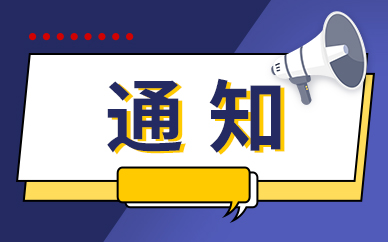Alan Farley 2015年11月10日
动量交易员寻找强烈趋势,使用侵略性策略高价买入在更高价卖出或者低价卖出在更低价平仓。平缓市场可以破坏这些策略减少利润,因为大多数股票和指数被困在相对狭窄的范围内。
平缓市场为动量策略设置了额外的障碍因为他们依靠突破和下跌。交易区间扰乱这一侵略性策略,他们试图推动突破支撑位或者阻力位通常会引起突然损失。
 (资料图片)
(资料图片)
下面是四种动量交易员可以用来适应平缓市场的方法:
减少交易频率,直到出现新的上升或者下降趋势。 在维持动量策略的同时减少交易规模,在市场反转时获得更小的损失。 减少持仓时间,在更短的时间框架寻求动量交易。 寻找趋势运动强烈的股票或者其他工具。市场可能在很长时间进行徘徊,降低波动幅度以巩固过去的趋势。降低频率能降低经费但是也丧失利用震荡区间有限的机会。减小手数有相同的影响,搁置交易计划直到市场回到支持策略的环境。
在走势不明的市场发现趋势
市场上众多板块总能提供机会,有很高的几率一些走势在大盘趋于平缓时与大盘表现相反。找出这些相反的部分进行趋势交易直到新的大规模上升或者下跌发生能为动量交易员提供获利的机会。
公用事业、国防股票和鞋类在区间范围市场通常表现良好,经常在资本退出前爆发。这是一个逻辑过度,因为机构把这些股票当成避风港,在新的趋势出现前把资金投放里面。
使用相对强度可以确定平缓市场中这些行业中最强劲的部分和其他吸引资金的部分。一种技术类型是使用200天指数移动平均线列出股票的价格分布。在这条线之上交易比例比较多的股票比接近或者在其下交易比例更多的股票相对强度更大。
这个分类过程也能用于鉴别出做空选项因为它建立一个对比列表。选择那些相对强度弱的股票在平缓市场中做空,最好是那些打破基础或者接近多年最低点的股票。在卖空之前检查股息计划因为收益导向性股票在这种环境中趋势更加明显,如果持有超过除息日你将需要支付费用。
事故股
一小部分充满动量的股票能在市场转向平缓时得以延续,因为他们发出吸引人的事件形成独特的基本面,吸引有限的资金到一个反馈回路,这可以形成很强的趋势。这些股票往往集中在高系数市场集团,包括科技、生物技术和零售行业。
他们通常也集中在资本频谱的低端并通过三个简单的技巧发现:
使用Russell-2000组件并将价格应用到200日指数移动平均线或者相对强度扫描中。 浏览Russell-2000组件,寻找每周或者每年新高。 寻找不同寻常的新闻并观察市场的反映,关注那些吸引比平均交易量更多资金的股票。高资本化事故股票很容易找到,因为他们吸引稳定的信息流和买卖兴趣。动量交易员可能已经跟踪这些问题因为他们是相对趋势市场中引人瞩目的。
减少持有时间
根据流行的说法,牛市总是存在的。在平缓市场中找到这些趋势的最简单方法是放大更小的时间框架检查高流动性股票。60分钟图尤其适用这种技术,通常发现两到五天和一到三周产生明显动量交易的价格波动。
广泛的交易区间为这种策略提供更高的利润,动量交易员在区间第三个低点进入60分钟突破并在高端第三个或者区间阻力位卖出。卖空则做相反操作。
这种技术的持有时间要符合交易员的方便程度,因为快速的进入和退出可能不适合习惯操作几周或者几个月趋势的交易员。另外,这自然适合那些已经经历日内波动的交易员,他们已经掌握了短时间价格图表的高干扰程度。
总结
动量交易员应该在平缓市场中降低交易频率和规模同时寻找延续上升或者下降趋势的事故股。60分钟图表提供一个第二动量策略,在有界限的交易区间中呈现小规模的上升或者卖空。
Finding Momentum Plays in Flat Markets
By Alan Farley | November 10, 2015
Momentum traders seek out strong trends, capitalizing on aggressive strategies that buy high and sell higher on the long side or sell low and cover lower on the short side. Flat markets can undermine these tactics, reducing profits, because the majority of equities and indices get stuck within the relatively narrow boundaries of trading ranges.
Flat markets present an additional roadblock for momentum strategies because they rely on buying breakouts and selling breakdowns. Trading ranges upset this aggressive approach, with attempts to push above resistance or drop below support typically attracting reversals that can punish new positions with sudden losses.
There are four common ways that momentum traders can adjust to flat markets:
Reduce trading frequency, waiting for a new uptrend or downtrend to set into motion. Reduce position size while maintaining the momentum strategy, taking smaller losses when markets reverse after breakout or breakdown attempts. Reduce holding period, looking for momentum trades within shorter time frame charts. Find securities or sectors with strongly trending action that diverges with rangebound indices.Markets can spend long periods grinding sideways, consolidating past trends while lowering volatility levels. Reducing frequency lowers drawdowns but fails to capitalize on the limited opportunities that evolve during the rangebound period. Reducing size has the same effect, putting the trading plan on hold until the market returns to conditions that support the strategy.
Finding Trends In Trendless Markets
Divergent performance across sectors offers a solution, with high odds that certain groups will act independently when the broad equity market goes flat. Identifying these groups early in a trading range reduces frustration for the momentum trader while providing the opportunities needed to profit until the next large-scale rally or sell-off sets into motion.
Utilities, defense stocks and footwear offer three market groups that tend to act well in rangebound markets, often breaking out of bases and heading higher in reaction to rotational capital exiting former high flyers. This is a logical transition because institutions regard these groups as safe havens, drawing capital until more traditional momentum plays enter into new trends.
Use a relative strength scan to identify the strongest components of these maverick sectors as well as other market groups attracting capital within the flat conditions. One technique sorts a comprehensive list of securities by price location vs. the 200-day EMA. Stocks trading at a high percentage above this moving average show greater relative strength than those trading near it or below it.
This sorting process can also be used to identify short candidates because it builds a leader and laggard list. Choose the weakest stocks for short side plays in flat markets, preferably those breaking down from bases at or near multiyear lows. Check the dividend schedule before selling short because income-oriented securities trend more sharply in these environments, and you’ll be on the hook for the payout if holding through the ex-dividend date.
Story Stocks
A narrow selection of momentum-fueled stocks survives the transition into flat markets because they tell attractive stories or carry unique fundamentals, concentrating limited capital into a feedback loop that can elicit very strong trends. These plays tend to congregate in higher beta market groups, including technology, biotechnology, and retail.
They also tend to cluster at the lower end of the capitalization spectrum and can often be found through three simple techniques:
Take a list of Russell-2000 components and apply the price vs. 200-day EMA or another relative strength scan. Flip through the charts of Russell-2000 components, looking for new weekly or yearly highs. Look for unusual news items in the pre-market and check the reaction, focusing on securities that attract much higher than average volumes.Higher capitalized story stocks are easily located because they attract steady news flow and buying or selling interest. The momentum trader may already be tracking these issues because they’re the most popular plays in actively trending markets. Execute momentum short sales with the weakest members of this group, while trading lower cap candidates solely on the long side.
Reduce Holding Period
According to popular lore, there’s always a bull market somewhere. The easiest way to find these trends in flat markets is to zoom in and examine highly liquid securities in lower time frames. The 60-minute chart is especially useful in this technique, often uncovering two to five day and one to three week price swings that produce outstanding momentum trades.
Broad trading ranges offer greater profits with this strategy, with the momentum trader entering a 60-minute breakout in the lower third of the range while looking to sell in the upper third or at range resistance. Short sales flip over this strategy, selling short on a 60-minute breakdown in the upper third of the range and covering in the lower third or at range support.
The holding period for this technique needs to match the trader’s comfort level because rapid entries and exits may be unsuitable for participants used to playing multiweek or multimonth trends. Alternatively, it’s naturally suited to experienced day and swing traders who have already mastered the higher noise levels found on shorter term price charts.
The Bottom Line
Momentum traders should reduce frequency and size in flat markets while seeking out story stocks that continue to trend higher or lower, despite adverse conditions. 60-minute charts offer a second momentum strategy, grinding out smaller-scale rallies and sell-offs within broader trading ranges.
本文翻译由兄弟财经提供
文章来源:http://www.investopedia.com/articles/active-trading/111015/finding-momentum-plays-flat-markets.asp








































































